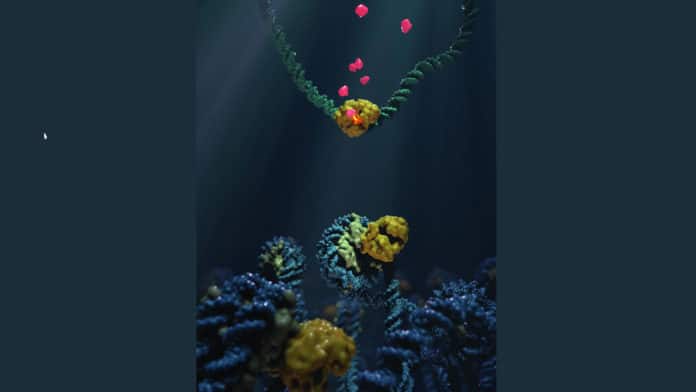The DNA sensor cyclic GMP–AMP synthase (cGAS) initiates innate immune responses following microbial infection, cellular stress, and cancer. Upon activation by double-stranded DNA, cytosolic cGAS produces biochemical reactions that activate the body’s so-called “innate” immune system.
cGAS is also present inside the cell nucleus, replete with genomic DNA, where chromatin has been implicated in restricting its enzymatic activity. However, the structural basis for inhibition of cGAS by chromatin remains unknown.
Now, scientists at EPFL and the Friedrich Miescher Institute in Switzerland have uncovered an intriguing mechanism on how nucleosomes tie and inactivate cGAS. The examination gives new bits of knowledge into the biology of this immunity-crucial molecule.
A nucleosome consists of a string of DNA wrapped around pairs, or “dimers,” of proteins called histones, like a thread around a spool.
Past studies have suggested that when cells are treated with the anti-cancer drug aclarubicin, specific histones are “mobilized” from chromatin. Simultaneously, cGAS also becomes mobilized, which helped scientists in this study to conclude that cGAS might somehow associate with the nucleosome in the cell. The idea was finally confirmed with biochemical assays that showed that the two could indeed interact.
Using cryo-electron microscopy, scientists observed how nucleosomes bind to cGAS. They studied the complex formed by cGAS and nucleosomes at a resolution of 3.1 Ångstroms (0.31 nm).
They found that cGAS binds to the so-called “acidic patch” of the nucleosome, a negatively charged platform that commonly binds proteins. Once bound there, both histones and the nucleosome DNA “trap” cGAS in a state in which it cannot engage or sense DNA and is therefore functionally inactivated.
The scientists acquainted changes with the cGAS-acidic patch interface to approve their discoveries, which adequately prevented cGAS from binding the nucleosome. This was enough to eliminate the nucleosome’s blocking effect on cGAS and unleashed a strong immune response in living cells.
The work offers the first structural clue to how chromatin interferes with the activity of cGAS. It reveals the structural basis of cGAS interaction with chromatin provides scientists with a mechanism of how cGAS can discriminate between its own cell’s DNA and that of foreign pathogens.
Journal Reference:
- Pathare, G.R., Decout, A., Glück, S. et al. Structural mechanism of cGAS inhibition by the nucleosome. Nature 587, 668–672 (2020). DOI: 10.1038/s41586-020-2750-6
